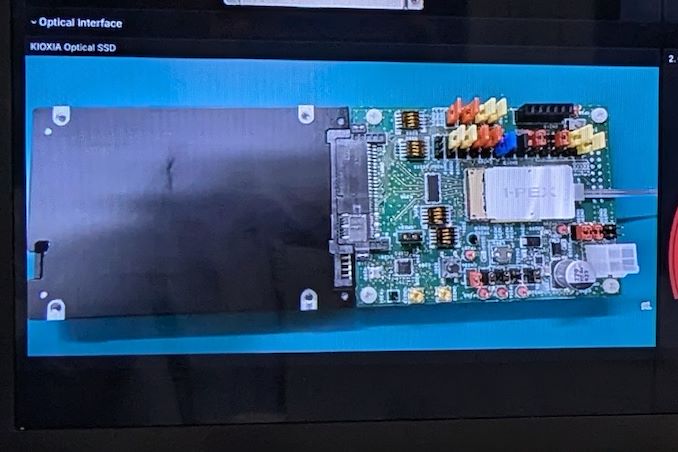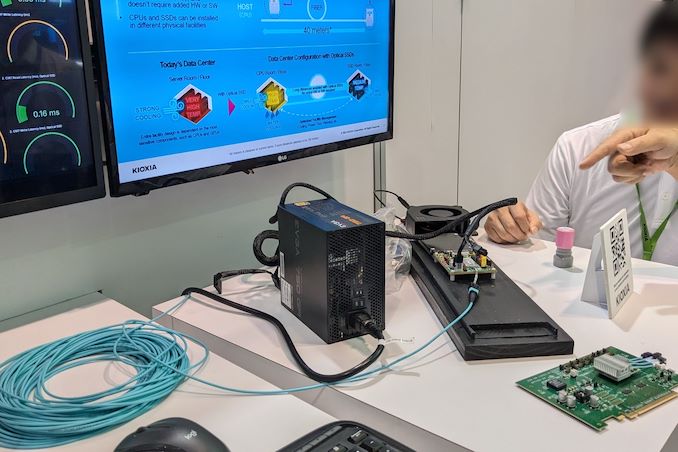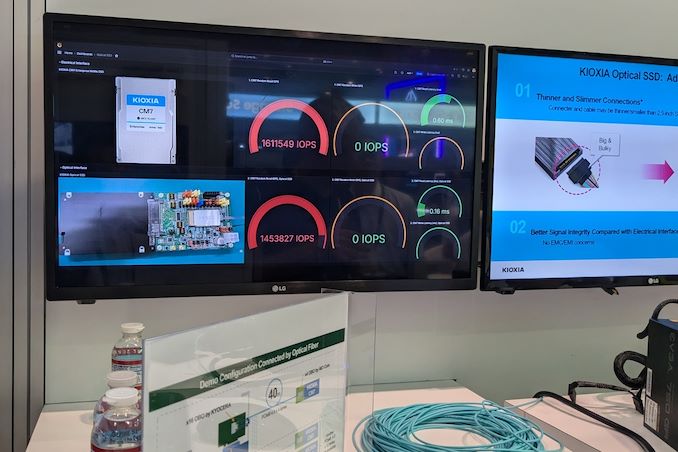A few years back, the Japanese government’s New Energy and Industrial Technology Development Organization (NEDO) allocated funding for the development of green datacenter technologies. With aims to achieve up to 40% savings in overall power consumption, several Japanese companies have been developing an optical interface for their enterprise SSDs. At this year’s FMS, Kioxia showcased their optical interface.
For this demonstration, Kioxia took its existing CM7 enterprise SSD and fashioned an optical interface for it. A PCIe card with on-board optics, developed by Kyocera, is installed in the server slot. This optical interface enables data transfer over long distances (40m in the demo, though Kioxia promises future cable lengths of up to 100m). This allows the storage to be placed in a separate room that requires minimal cooling compared to the rack housing the CPUs and GPUs. Disaggregation of various server components will become feasible as ultra-high throughput interfaces like PCIe 7.0 (with 128 GT/s rates) are introduced.
The demonstration of the optical SSD showed a slight reduction in IOPS performance but a notable superiority in latency metrics compared to the current enterprise SSD using a copper network link. There are clear benefits in wiring requirements and maintaining signal integrity with optical links.
Being a proof-of-concept demonstration, it is evident that an industry-standard approach is necessary for broader adoption by different datacenter vendors. The PCI-SIG optical workgroup will need to expedite their efforts to devise a standardized approach to this innovation.






